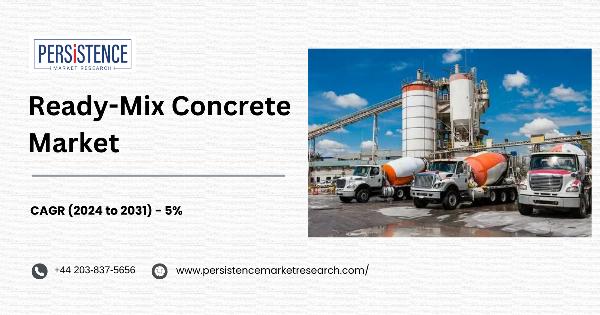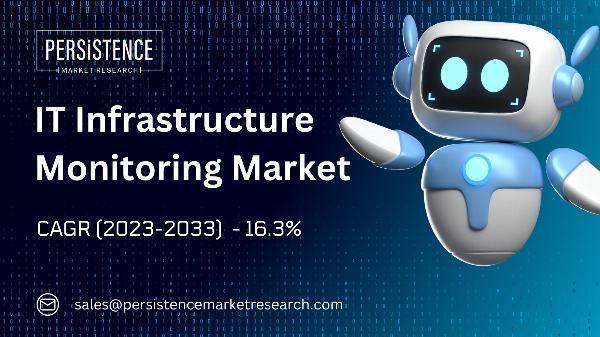Key Drivers of the Ready-Mix Concrete Market Boom

Strong 8k brings an ultra-HD IPTV experience to your living room and your pocket.
The global ready-mix concrete market is projected to grow from USD 538.9 billion in 2024 to USD 758.3 billion by 2031, expanding at a CAGR of 5%. This growth is driven by increasing construction activities in both emerging and developed economies, a shift towards green concrete solutions, and advancements in digital technology. Ready-mix concrete's ability to provide consistent quality and efficiency in large-scale projects, coupled with governmental investments in infrastructure and affordable housing, supports its rising demand. The market is also benefiting from the industry's focus on sustainability and improved production practices.
Infrastructure Investment, Urbanization, and Technological Innovation Propel Market Growth
The ready-mix concrete market is experiencing unprecedented growth, driven by a confluence of factors that are reshaping the industry landscape. As global demand for infrastructure development and modernization intensifies, key drivers are fueling the market boom. From increased investments in infrastructure to advancements in technology and sustainability efforts, these drivers are propelling the ready-mix concrete market to new heights.
1. Robust Infrastructure Investments
Infrastructure development remains a primary catalyst for the growth of the ready-mix concrete market. Governments and private entities worldwide are committing substantial resources to build and upgrade infrastructure, including roads, bridges, airports, and utilities. Key aspects include:
Transportation Networks: Major infrastructure projects such as highways, railways, and airports require significant quantities of ready-mix concrete. The focus on improving transportation networks to enhance connectivity and support economic growth is a major driver of market demand.
Urban Infrastructure: Rapid urbanization has led to increased investments in urban infrastructure, including residential and commercial buildings, public spaces, and utilities. The need for durable and high-quality concrete for these developments is contributing to market expansion.
Public Works Projects: Public works initiatives aimed at modernizing and expanding infrastructure are creating sustained demand for ready-mix concrete. Projects related to water treatment facilities, sewage systems, and flood defenses are examples where concrete plays a crucial role.
2. Accelerated Urbanization
The global trend of urbanization is significantly impacting the ready-mix concrete market. As more people migrate to urban areas and cities expand, there is a growing need for new construction and infrastructure to accommodate increasing populations. Key drivers include:
Residential Construction: The demand for new housing units in urban areas is driving the need for ready-mix concrete. Residential construction projects, including high-rise apartments and housing complexes, are major consumers of concrete.
Commercial Development: The expansion of commercial spaces such as office buildings, retail centers, and industrial facilities is contributing to increased concrete consumption. The growth of commercial real estate reflects broader economic trends and urban development strategies.
Smart Cities: The development of smart cities, which integrate technology and data to enhance urban living, requires advanced construction materials. Ready-mix concrete is essential for building infrastructure that supports smart city initiatives, including transportation systems and energy-efficient buildings.
3. Technological Innovations
Advancements in technology are transforming the ready-mix concrete industry, leading to more efficient production processes, enhanced product performance, and reduced environmental impact. Key technological drivers include:
Smart Batching and Mixing Systems: The integration of smart batching systems and automated mixing technologies improves the precision and consistency of concrete production. These innovations reduce waste, enhance quality control, and streamline operations.
High-Performance Concrete: Technological advancements have led to the development of high-performance concrete with superior strength, durability, and resistance to environmental conditions. This type of concrete is increasingly used in demanding applications such as bridges, tunnels, and high-rise buildings.
3D Printing and Prefabrication: The use of 3D printing and prefabrication techniques in construction is driving the demand for specialized concrete products. These technologies enable the creation of complex and customized structures with greater efficiency.
4. Sustainability and Green Building Trends
Sustainability has become a critical focus in the construction industry, influencing the ready-mix concrete market. Efforts to reduce the environmental impact of concrete production and align with green building standards are driving market growth. Key aspects include:
Eco-Friendly Concrete Mixes: The development of eco-friendly concrete formulations that incorporate recycled materials and low-carbon cements is addressing environmental concerns. These green solutions align with global sustainability goals and regulatory requirements.
Energy-Efficient Production: Advances in production technologies that reduce energy consumption and emissions are supporting the industry’s commitment to sustainability. Companies are investing in renewable energy sources and efficient production processes to minimize their carbon footprint.
Regulatory Compliance: Stricter environmental regulations and building codes are encouraging the adoption of sustainable practices in concrete production. Compliance with these regulations is driving the development and use of green concrete products.
5. Economic Growth and Development
Economic growth and development contribute to the expansion of the ready-mix concrete market. As economies recover and grow, increased investment in construction and infrastructure projects stimulates demand for concrete. Key factors include:
Economic Stimulus Programs: Government stimulus programs and funding for infrastructure projects boost demand for ready-mix concrete. These initiatives aim to stimulate economic activity and create jobs through construction and development projects.
Private Sector Investments: Private sector investments in real estate, commercial developments, and industrial facilities drive the need for ready-mix concrete. Economic growth and business expansion contribute to the overall market demand.
Conclusion
The ready-mix concrete market is experiencing robust growth, driven by key factors such as infrastructure investments, accelerated urbanization, technological innovations, sustainability trends, and economic development. As these drivers continue to shape the industry, the market is poised for continued expansion and evolution. Stakeholders in the ready-mix concrete sector must stay informed about emerging trends and adapt to changing demands to capitalize on growth opportunities.
Note: IndiBlogHub features both user-submitted and editorial content. We do not verify third-party contributions. Read our Disclaimer and Privacy Policyfor details.







